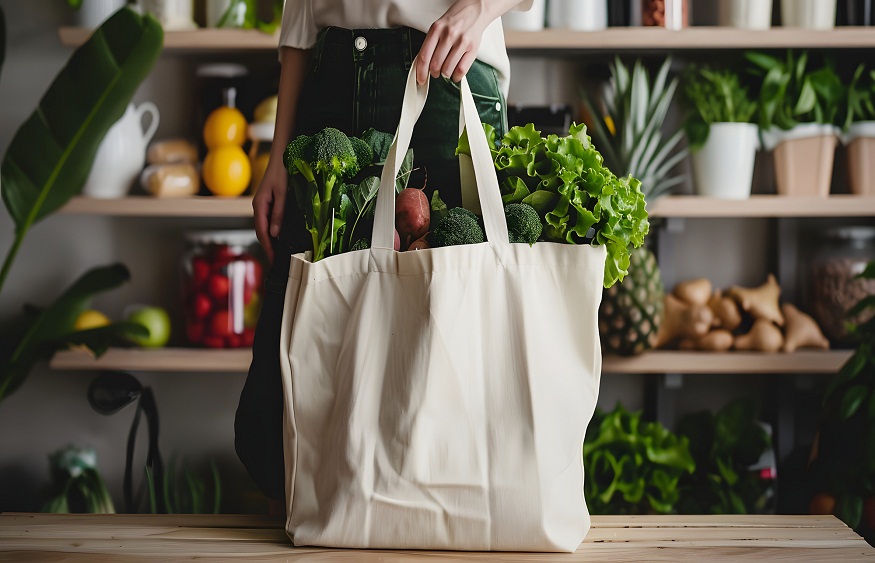How Sustainable Materials Are Changing the Packaging Industry
 The environmental impact of packaging waste is driving innovation in sustainable materials and design in the packaging industry. Brand owners face increasing pressure from consumers, retailers, and governments to reduce single-use plastics and incorporate more recyclable, compostable and eco-friendly alternatives. Read on for a look at some of the most promising material innovations that are redefining packaging.
The environmental impact of packaging waste is driving innovation in sustainable materials and design in the packaging industry. Brand owners face increasing pressure from consumers, retailers, and governments to reduce single-use plastics and incorporate more recyclable, compostable and eco-friendly alternatives. Read on for a look at some of the most promising material innovations that are redefining packaging.
Bioplastics and Plant-Based Options
Conventional plastics made from fossil fuel feedstocks make up over 35% of global packaging. New “bioplastics” made fully or partially from renewable plant materials offer promising alternatives in terms of end-of-life recyclability and biodegradability compared to standard petrochemical plastics. Some examples are:
- PLA or PHA plastics made from cornstarch, sugarcane, or cellulose.
- Molded fiber packaging, containers or utensils made from bamboo, wheat straw, bagasse pulp or other agricultural wastes.
- Films or molded trays using algae, seaweed, or mushroom mycelium extracts.
These innovative bioplastic formulations derived from plants or food scraps can achieve technical specifications for protection and shelf-life on a par with incumbent plastics. The added sustainability benefit comes from renewable sourcing that sequesters carbon during plant growth versus extraction and refining of fossil fuel feedstocks.
Expanded Use of Recycled Materials
The circular economy approach emphasizes capturing materials already in circulation rather than perpetually extracting ever more virgin resources from the earth. For paper and cardboard packaging, using higher percentages of recycled paper significantly lowers ecological impact by reducing tree harvesting, production emissions, water use, and waste generation.
Post-consumer recycled PET and HDPE plastic also redirect resources heading to landfills back into manufacturing. Consumer brands across sectors now proudly highlight recycled content used in their packaging through labels like “Made from 50% Recycled Material” or “100% Recyclable”. Continually improving processing technologies provide consistent quality recycled materials at costs comparable to virgin materials.
Advances in Compostable Bio-Packaging
Many compostable bioplastics and molded fibers made from plants transform discarded packaging into organic fertilizer through industrial composting rather than lingering for years in landfills. Feedstocks include crop starches from corn, potato, sugar beets or wheat stalks processed into plastics. Bamboo fibers and bagasse from sugar extraction can be formed into compostable parchment papers or textile fibers suitable for wraps, bags, and liners.
These compostable materials offer promising single-use alternatives but do require access to municipal or commercial composting facilities capable of achieving the sustained heat, moisture and air exposure needed for biodegradation. Such specialized composting infrastructure capable of processing bioplastics alongside food scraps remains limited currently, but continues advancing across several states.
Innovations in EPS Foam Replacement
Expanded polystyrene (EPS) foam or Styrofoam is ubiquitously used in takeout containers, cups, coolers, and protective packaging. While technically recyclable, EPS recycling rates hover under 10% in the U.S., with most ending up in landfills long-term. Some manufacturers like Epsilyte are now offering versions containing up to 50% recycled content. Compostable and biodegradable EPS alternatives using modified starches or lignin polymers are also reaching the market.
Many companies actively replace EPS foam with molded pulp fiber made from recycled newsprint or crop waste. Developing foams using captured methane that would otherwise escape into the atmosphere further diminishes packaging climate effects compared to petrol-based EPS.
Conclusion
The packaging industry recognizes the growing societal and regulatory demands to develop sustainable material alternatives that minimize environmental harm from extraction, production, and waste. Early technical innovations in bioplastics, recycled materials, industrially compostable substances, and EPS replacements provide reasons for guarded optimism. Continued cross-industry coordination and policy support for recycling and composting infrastructure will help promising options scale from niche to mainstream ubiquity. The coming decade will witness promising steps toward necessary packaging transformations.
